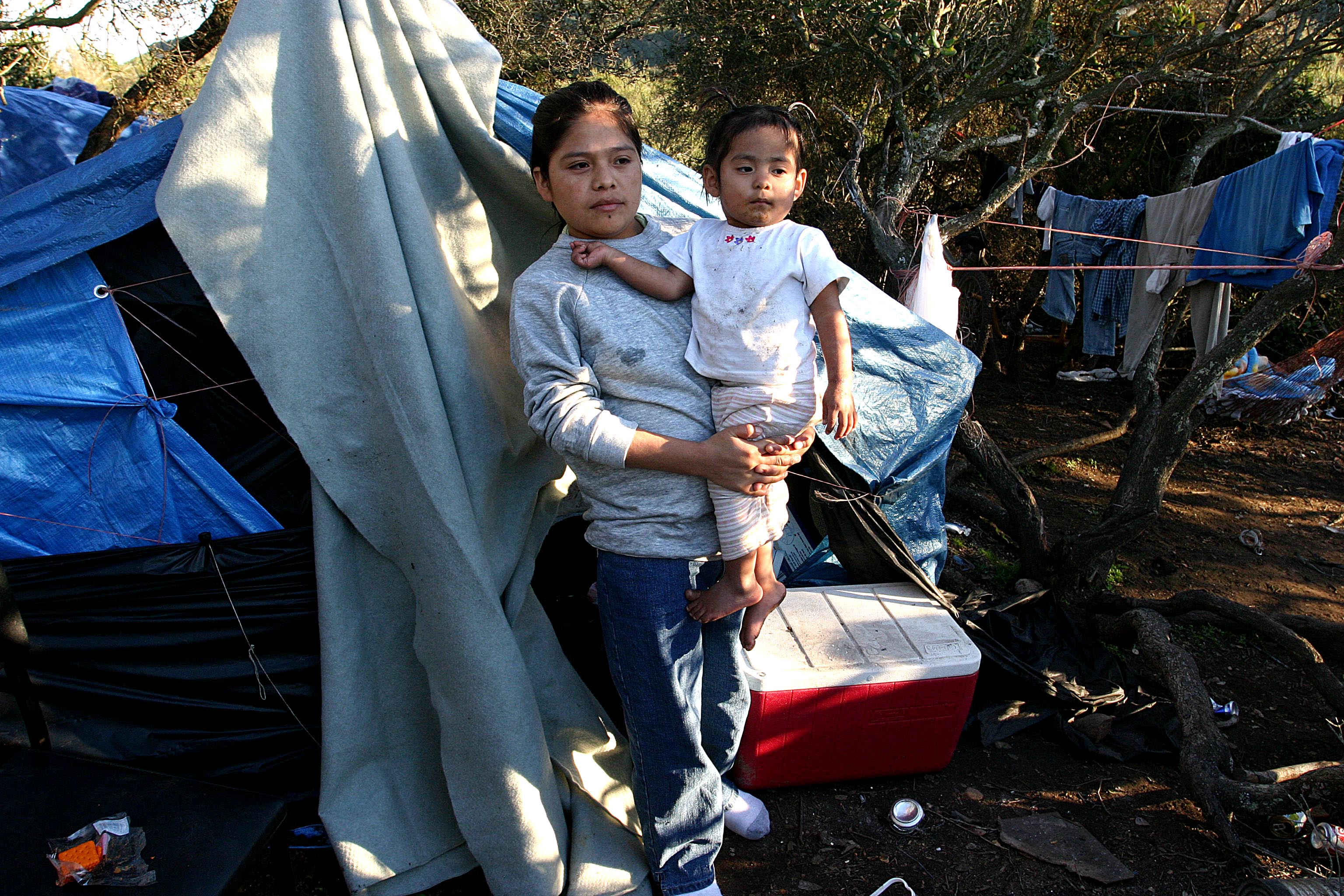From in the fields of the north/En los campos del norte
by David Bacon
At the end of the 1970s California farm workers were the highest-paid in the U.S., with the possible exception of Hawaii’s long-unionized sugar and pineapple workers. Today people are trapped in jobs that pay the minimum wage and often less, and mostly unable to find permanent year-around work.
In 1979 the United Farm Workers negotiated a contract with Sun World, a large citrus and grape grower. The contract’s bottom wage rate was $5.25 per hour. At the time, the minimum wage was $2.90. If the same ratio existed today, with a state minimum of $10.50, farm workers would be earning the equivalent of $19.00 per hour.
Today farm workers don’t make anywhere near $19.00 an hour. In 2008 demographer Rick Mines conducted a survey of 120,000 migrant farm workers in California from indigenous communities in Mexico – Mixtecos, Triquis, Purepechas and others — counting the 45,000 children living with them, a total of 165,000 people. “One third of the workers earned above the minimum wage, one third reported earning exactly the minimum and one third reported earning below the minimum,” he found.
In other words, growers were paying an illegal wage to tens of thousands of farm workers. The case log of California Rural Legal Assistance is an extensive history of battles to help workers reclaim illegal, and even unpaid, wages. Indigenous workers are the most recent immigrants in the state’s farm labor workforce, and the poorest, but the situation isn’t drastically different for others. The median income is $13,000 for an indigenous family, the median for most farm workers is about $19,000 – more, but still far from a liveable wage.
Low wages in the fields have brutal consequences. When the grape harvest starts in the eastern Coachella Valley, the parking lots of small markets in farm worker towns like Mecca are filled with workers sleeping in their cars. For Rafael Lopez, a farm worker from San Luis, Arizona, living in his van with his grandson, “the owners should provide a place to live since they depend on us to pick their crops. They should provide living quarters, at least something more comfortable than this.”
In northern San Diego County, many strawberry pickers sleep out of doors on hillsides and in ravines. Each year the county sheriff clears out some of their encampments, but by next season workers have found others. As Romulo Muñoz Vasquez, living on a San Diego hillside, explains: “There isn’t enough money to pay rent, food, transportation and still have money left to send to Mexico. I figured any spot under a tree would do.”
Compounding the problem of low wages is the lack of work during the winter months. Workers have to save what they can while they have a job, to tide them over. In the strawberry towns of the Salinas Valley, the normal 10 percent unemployment rate doubles after the harvest ends in November. While some can collect unemployment, the estimated 53 percent who have no legal immigration status are barred from receiving benefits.
Yet people have strong community ties because of shared culture and language. Farm workers in California speak twenty-three languages, come from thirteen different Mexican states, and have rich cultures of music, dance, and food that bind their communities together. Migrant indigenous farmworkers participate in immigrant rights marches, and organize unions.
Indigenous migrants have created communities all along the northern road from Mexico to the U.S. and Canada. Migration is a complex economic and social process in which whole communities participate. Migration creates communities, which today pose challenging questions about the nature of citizenship in a globalized world. The function of these photographs, therefore, is to help break the mold that keeps us from seeing this reality.
The right to travel to seek work is a matter of survival for millions of people, and a new generation of photographers today documents the migrant-rights movements in both Mexico and the United States (with its parallels to the civil rights movement of past generations). Like many others in this movement, I use the combination of photographs and oral histories to connect words and voices to images – together they help capture a complex social reality as well as people’s ideas for changing it.
Today racism is alive and well, and economic inequality is greater now than it has been for half a century. People are fighting for their survival. And it’s happening here, not just in safely distant countries half a world away. As a union organizer, I helped people fight for their rights as immigrants and workers. I’m still doing that as a journalist and photographer. I believe documentary photographers stand on the side of social justice – we should be involved in the world and unafraid to try to change it. (Due to lack of space this article was cut).
To read the complete article, please visit: https://www.peoplesworld.org/article/the-true-conditions-of-farm-workers-today/



